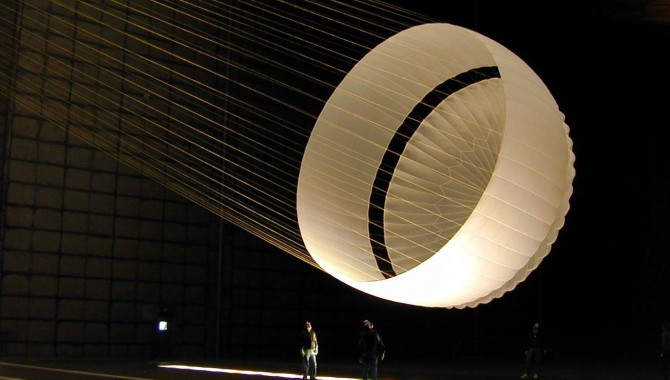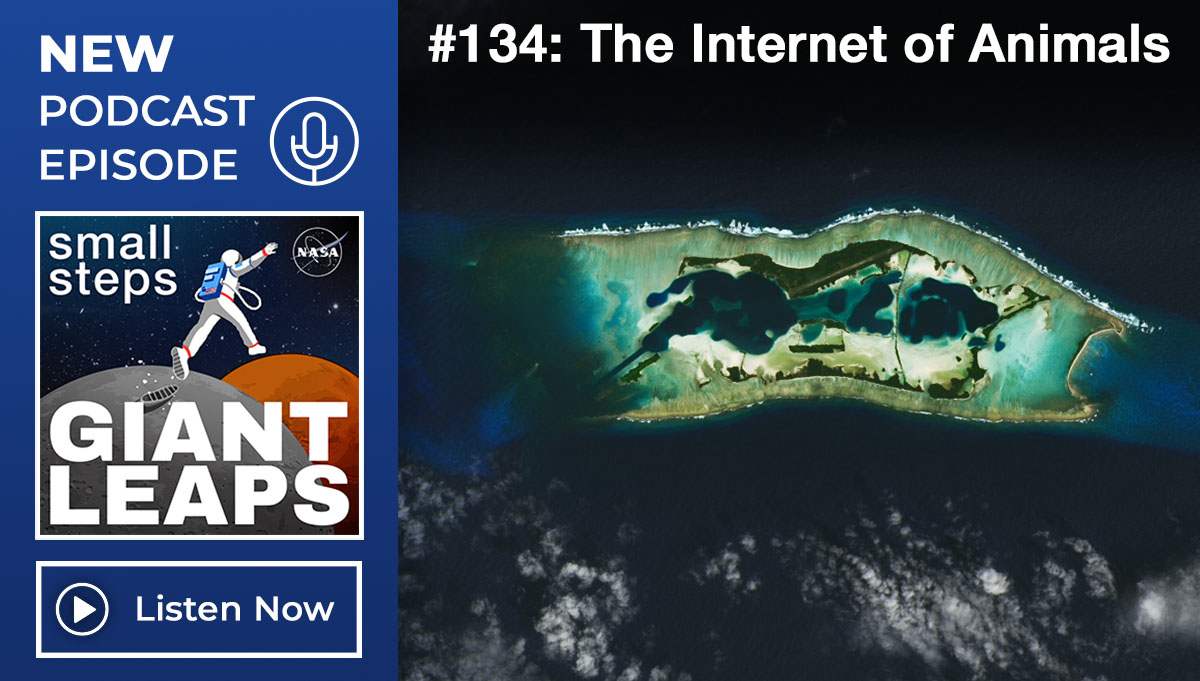
By Angelo “Gus” Guastaferro
Why take responsibility for a major foul-up on a project outside your area of expertise that started before you were on the scene? Here’s one story that may answer that question.
I became deputy director of Ames Research Center in April 1981. Having previously worked on the Viking mission and for the planetary exploration program at Headquarters, I was new to this level of management. I also didn’t have a lot of experience in most of the work being done at Ames. But in 1982, I found myself acting director because the director, Clarence Syvertson, had coronary bypass surgery and was out for four months.

The Mars Exploration Rover parachute underwent deployment testing in the world’s largest wind tunnel at Ames Research Center.
Photo Credit: NASA Jet Propulsion Laboratory
At that time, a group of Ames engineers were working to increase the capacity of an existing 40′ x 80′ subsonic wind tunnel used for full-scale testing of aircraft. They were adding an 80′ x 120′ test section and installing more powerful drive motors to increase the wind speed from 200 to 300 knots. One of the elements of the new design was a set of plywood vanes that would direct the airflow to one or the other test sections. On December 9, disaster struck.
During testing that day, the 130-foot-long turning vane set failed. Debris crashed into the wind tunnel’s six fifteen-blade wooden propellers (each as high as a four-story building), damaging or destroying most of them. As I said at the time, “We generated a lot of toothpicks.”
The accident investigation board eventually found multiple causes for the failure, including potential problems with the original design, late design changes that were not properly reviewed, construction quality that did not meet requirements, and inadequate instrumentation for measuring loads on the vane set. But this story is not about why the failure happened; it is about how leaders should respond when a problem like this one occurs.
It could have been tempting to find someone else to blame. After all, I was new to Ames. I hadn’t been involved in the design decisions for the project. It wasn’t my area of expertise. Approaching it this way was tempting, but not productive. The fact was I was acting director, and the failure happened on my watch. By telling myself, “Gus, you’re responsible,” I was able to get past the question of blame and concentrate instead on moving quickly to understand and solve the problem.
I thought it was important to do what needed to be done before being told by NASA Headquarters. Within hours, we had a recovery plan in place, and I received Headquarters approval from the chair of the investigation board, Bob Swain. Taking prompt control of an accident or incident investigation shows, first of all, that you are committed to finding out what went wrong and rectifying the errors. It also puts you in a position to shape the outside review team.
Bob and I took three days to complete the team and outline the investigation. With most of my career spent at Langley Research Center, I was determined to get the systems engineer at Langley and the U.S. Air Force Tullahoma wind tunnel facility involved in the investigation. Taking responsibility doesn’t mean you have all the answers. I certainly didn’t. We put together a team that I knew would do an outstanding job of analyzing the fatal flaw and coming up with the recommendations we needed to get the tunnel up and running. Their two months of dedicated work fully lived up to my expectations.
Then I went to the United Kingdom with the Ames Engineering Directorate to get new propellers made. Constructed of layers of hand-shaped, laminated spruce, they called for skilled precision work. It took at least six months to get new blades made to specification.
The wind tunnel was out of commission for a year—a pretty good recovery time, I think, given the extent of the failure. Since then it has been used successfully for full-scale testing of helicopters and Mars rover parachute designs, among many other applications. It is still operating today, more than twentyfive years after that December day when we found ourselves facing a tunnel full of toothpicks.
Handling that crisis was a formative experience for me. Looking back, I’d say it taught me several valuable lessons. The importance of taking responsibility is the biggest one, but a couple of others come to mind:
- It’s important to stretch yourself. Don’t always do what’s in your comfort zone.
- If you admit you need help and give people credit for their contribution, they will help you.







